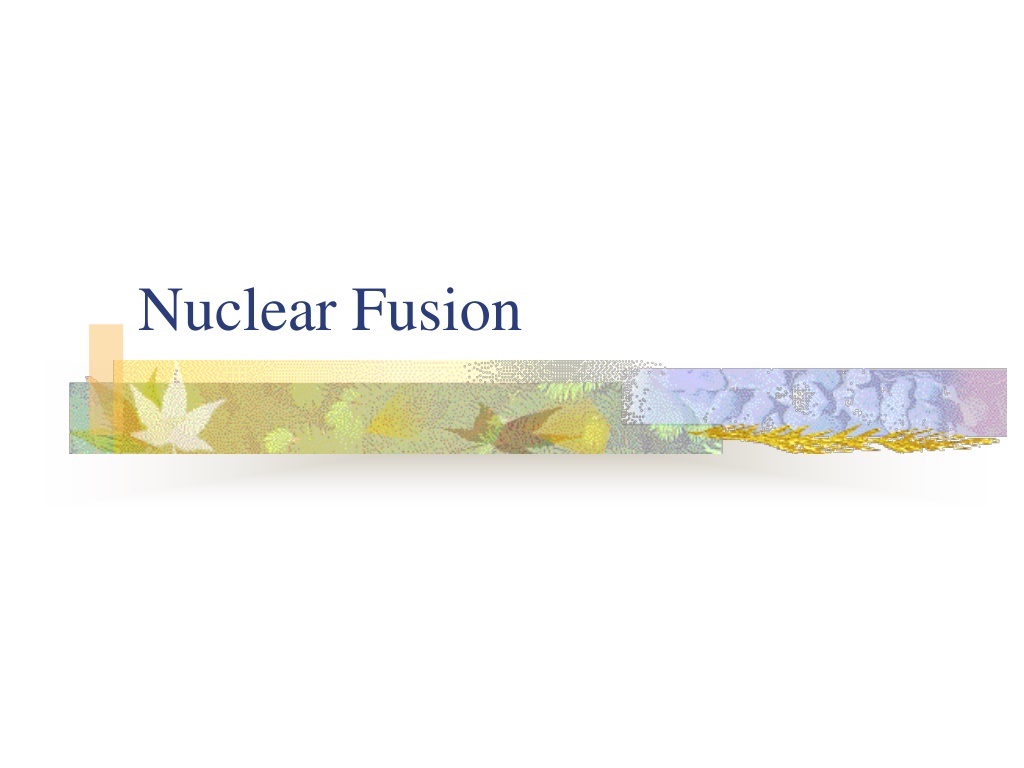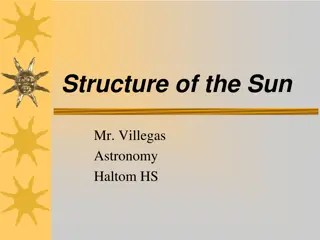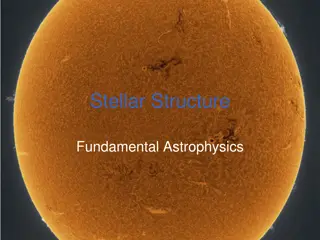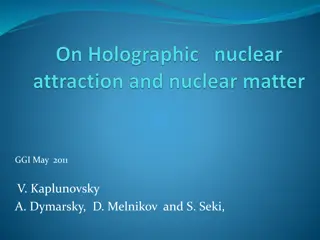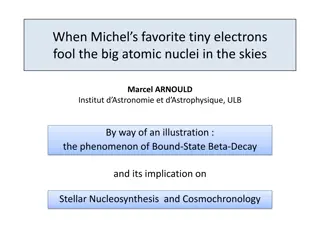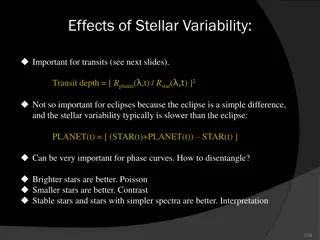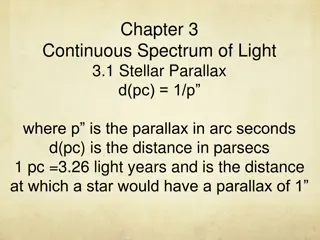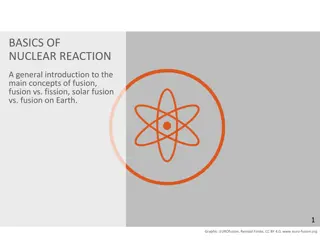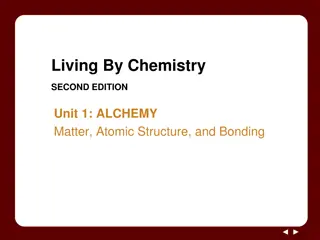Exploring Nuclear Fusion and Stellar Evolution
Nuclear fusion is a powerful process where atomic nuclei combine to form larger atoms, releasing significant energy. Stars like the Sun rely on fusion to generate energy, creating new elements in the process. The death of a star can lead to the formation of heavier elements that eventually contribute to the creation of planets. While fusion reactions have the potential for clean energy production, challenges such as controlling the reaction remain. Radioactive waste, running out of fuel, and the potential of breeder reactors also play significant roles in the context of nuclear energy.
Download Presentation

Please find below an Image/Link to download the presentation.
The content on the website is provided AS IS for your information and personal use only. It may not be sold, licensed, or shared on other websites without obtaining consent from the author. Download presentation by click this link. If you encounter any issues during the download, it is possible that the publisher has removed the file from their server.
E N D
Presentation Transcript
Fusion ~The joining of nuclei to make larger atoms The Sun produces energy in this manner. Hydrogen bombs use this process. Much more energy per gram is released by fusion than is by fission. Fusion reactions create no radioactive waste Unfortunately it is much harder to start and control a self sustaining reaction. It can not be used in a power plant yet.
Where elements are made? Elements are formed in nuclear fusion reactions in stars. Normally a star gets its energy by fusing 4 hydrogen atoms into a helium atom 4 H He As stars get older, they begin to fuse elements into heavier elements
Death of a star Near the end of a star s life it begins to collapse on itself, and making heavier elements Nova, supernova- explosion of a star When a star explodes, it sends all the elements it made scattering throughout the universe.
How they get here Clouds of these elements are what planets were formed from. Asteroids, and comets also could form and come to this planet.
Fusion reaction 2 1 1 3 fusion 1 4 2 +energy H + H + n 0 He Hydrogen atoms are fused together to form helium. Using 4 hydrogen atoms takes more energy, but can be done. It is easier if you use isotopes of hydrogen Deuterium (D 1 no) and Tritium (T 2 no)
Radioactive waste Unusable materials that give off radiation This is produced by enriching uranium, and from the remnants of the spent fuel. It is also produced by the medical industry and oil and gas drilling and refining. This is highly dangerous if people were to come in contact with it, so it must be stored in a safe place.
Running out of fuel Like all other sources nuclear fuels are limited to the amount of fuel we can mine. We are in no danger of running out of uranium but some day that will be a problem. Breeder Reactors, used currently in Europe, take unusable U-238 and convert it into usable Pu-239 greatly increasing our supply of fuel. They are not used in the US yet for concerns over their safety.
Fusion Reactor If fusion reactors could run, then it would run off of isotopes of hydrogen. Deuterium is plentiful enough that there would not be a problem for a long time. If the reaction could use regular hydrogen instead it would be even better.
Transmutation of elements transmutation- changing one element into another. Done by bombarding an atom with alpha particles or some type of radiation. All elements outlined on the periodic table are created this way.
The more famous ones The only synthesized element you probably heard of before this class is Plutonium. It is used for nuclear reactions (power plants, submarines, A-bombs) Americium is the most commonly used in smoke detectors. Research was done at the University of Berkeley, California refer to elements 95, 97 and 98
Dangers of Nuclear Power and Radiation
Cells are undamaged. radiation Cells are damaged, repair damage and . Operate normally Cells die as a result of damage. operate abnormally (cancer).
Effects of radiation Radiation breaks apart cell s structures and DNA. Cells can repair some of the damage of low level exposure over time. Higher levels of radiation can cause an increased rate of cancer, sterility, birth defects, death.
Radiation does not Cause an instant mutation in a person (You won t grow a third eye) You won t glow in the dark either Radiation is measured in mrem (millirems)
Doses The average person receives 360 mrem a year with no adverse effects. 56% of the survivors of 1945 bombing of Hiroshima and Nagasaki were still alive in 1990, and they received ~500,000 mrem. These effects are still being studied.
Biological effects depend on 1. Energy of Radiation 2. Penetrating ability of radiation 3. Ionization ability of the radiation 4. length of exposure
Ionization ability Radiation can knock electrons off of atoms creating ions. Some radiation is better at this than others. Ionizing radiation- EM radiation higher than visible light (UV, X-rays, and gamma rays) Meaning they are good at this. All radiation lower than this (visible, IR, microwaves, radio waves) are nonionizing. Meaning they don t create ions very well.
Cell Phones Cell phones send and receive information using radio waves. This is nonionizing. Nonionizing is still dangerous if the energy is high enough (look at a microwave oven). Cell phones should release radiation in low enough energy levels that they are not harmful. The problem is you can t do effective long term studies on any cell phone because they keep changing so dramatically.
Immediate effects of large doses of radiation Dose of radiation Effects above 5,000 mrem can cause observable effects (more susceptible to illnesses) Nausea, loss of hair 100,000 mrem - 200,000 mrem 200,000 mrem- 500,000 mrem above 500,000 mrem https://www.unbelievable-facts.com/2016/12/hisashi-ouchi.html ulcers, internal bleeding Death
